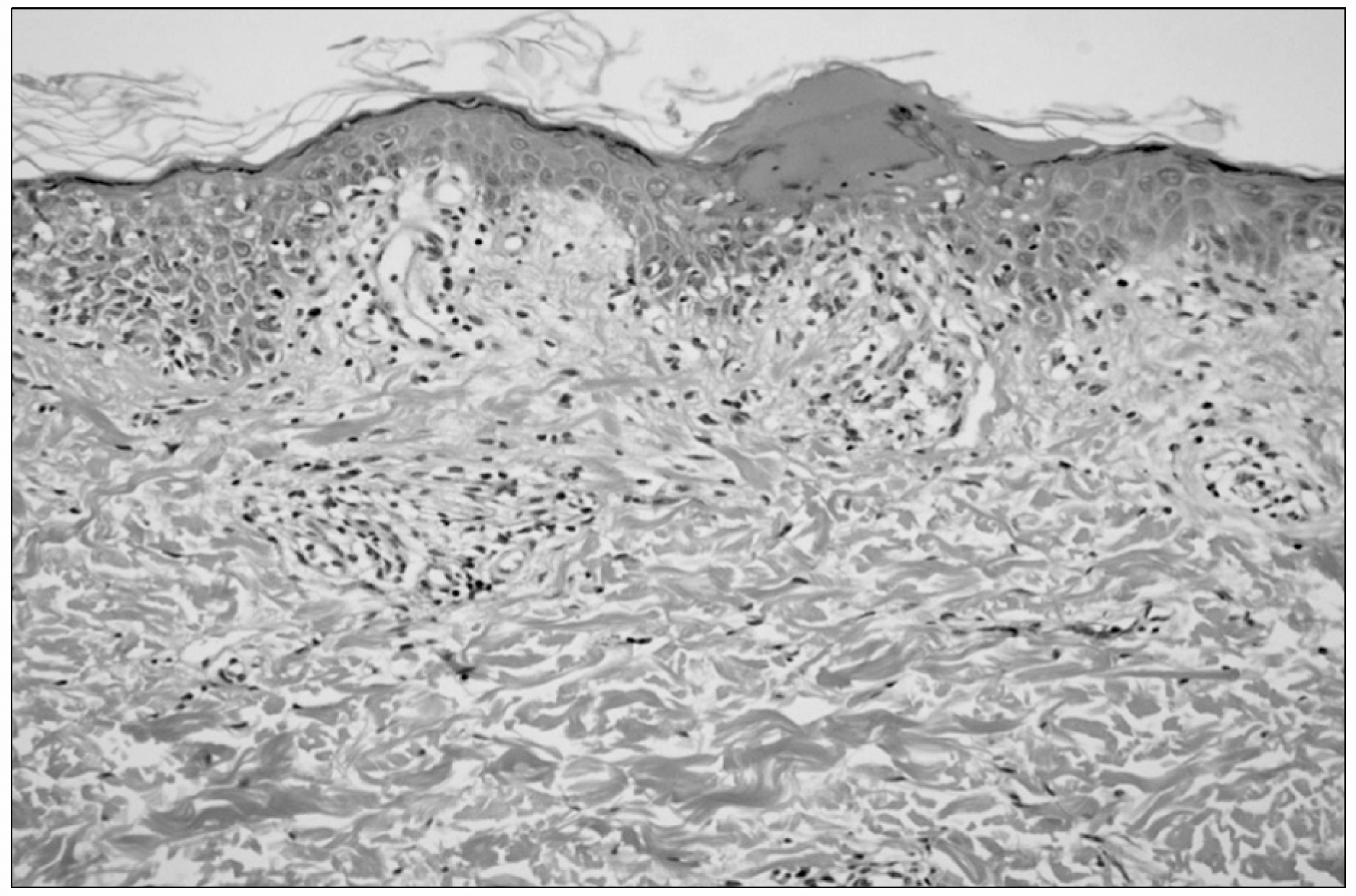Abstract
Hematopoietic stem cell transplantation has evolved as a central treatment modality for the management of various hematologic malignancies. Despite adequate posttransplantation immunosuppressive therapy, acute GVHD remains a major cause of morbidity and mortality, even for the patients who have received HLA identical sibling grafts. Once established, acute GVHD is difficult to treat, and the best primary treatments such as corticosteroid have shown responses of approximately 50%. Once GVHD becomes steroid-refractory, the chances of survival are slim at best, and the possibility of long-term complications from chronic GVHD is almost always the rule. Many agents are currently being evaluated to treat this malady, including ATG, monoclonal antibodies, pentostatin, denileukin diftitox, etc. We reported here on a case of steroid refractory acute GVHD that was treated with IL-2 and TNF-α blocker in myelodysplastic syndrome patient who underwent unrelated allogeneic stem cell transplantation.
REFERENCES
1). Couriel D., Caldera H., Champlin R., Komanduri K. Acute graft-versus-host disease: pathophysiology, clinical manifestations, and management. Cancer. 2004. 101:1936–46.

2). Khoury H., Kashyap A., Adkins DR, et al. Treatment of steroid-resistant acute graft-versus-host disease with anti-thymocyte globulin. Bone Marrow Transplant. 2001. 27:1059–64.

3). Przepiorka D., Kernan NA., Ippoliti C, et al. Daclizumab, a humanized anti-interleukin-2 receptor alpha chain antibody, for treatment of acute graft-versus-host disease. Blood. 2000. 95:83–9.

4). Willenbacher W., Basara N., Blau IW., Fauser AA., Kiehl MG. Treatment of steroid refractory acute and chronic graft-versus-host disease with daclizumab. Br J Haematol. 2001. 112:820–3.

5). Lee SJ., Zahrieh D., Agura E, et al. Effect of up-front daclizumab when combined with steroids for the treatment of acute graft-versus-host disease: results of a randomized trial. Blood. 2004. 104:1559–64.

6). Schmidt-Hieber M., Fietz T., Knauf W, et al. Efficacy of the interleukin-2 receptor antagonist basiliximab in steroid-refractory acute graft-versus-host disease. Br J Haematol. 2005. 130:568–74.

7). Bay JO., Dhedin N., Goerner M, et al. Inolimomab in steroid-refractory acute graft-versus-host disease following allogeneic hematopoietic stem cell transplantation: retrospective analysis and comparison with other interleukin-2 receptor antibodies. Transplantation. 2005. 80:782–8.

8). Couriel D., Saliba R., Hicks K, et al. Tumor necrosis factor-alpha blockade for the treatment of acute GVHD. Blood. 2004. 104:649–54.




 PDF
PDF ePub
ePub Citation
Citation Print
Print





 XML Download
XML Download